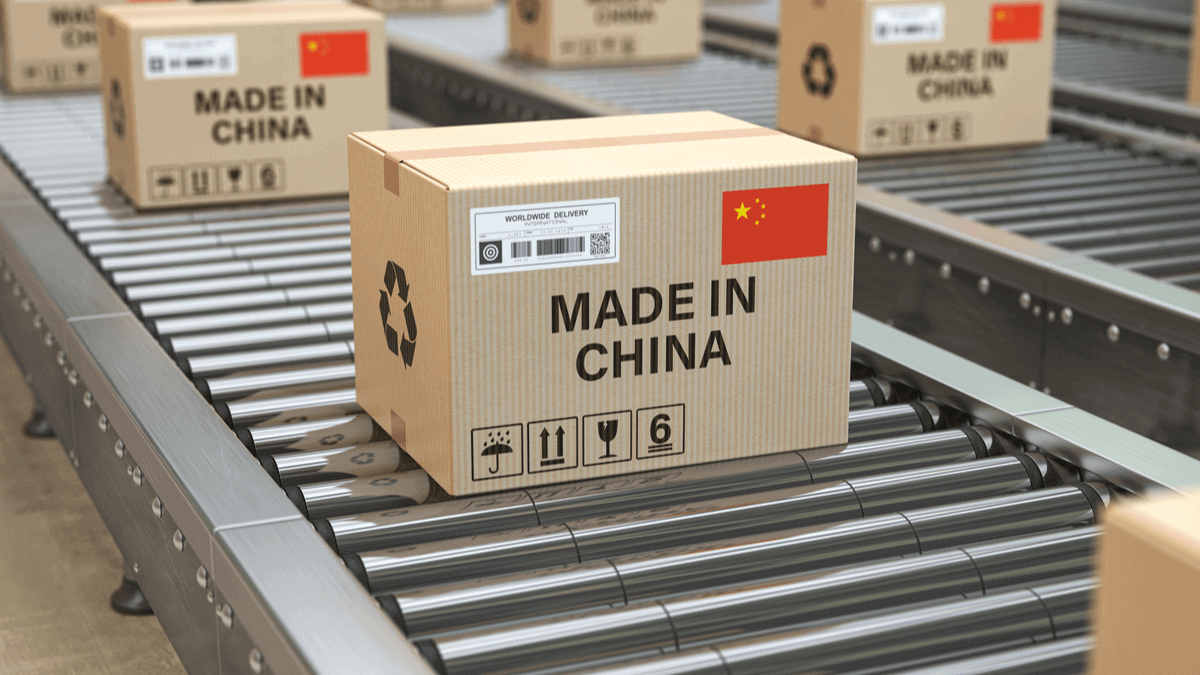How to Open a Business Bank Account in Finland: A Guide for U.S. Entrepreneurs
Learn how to open a business bank account in Finland with this guide. Get essential info and steps for setting up your business finances.

China is one of the largest suppliers of imported goods in the United States, with imports totaling $434.7 billion in 2020. US imports from China amount to about 18% of overall US imports.¹
As more businesses explore importing products from China, it’s crucial to look at associated costs such as shipping fees and international invoices, potential restrictions, as well as choosing the right suppliers.
This article will explore how to import goods from China to the USA. You’ll also read about financial tools to help streamline and reduce international costs to import from China.
| With Wise Business you can easily pay your suppliers abroad while saving up to 19x compared to PayPal. |
|---|
| Table of Contents |
|---|
| |
There are many reasons why businesses choose to import products from China to the USA.
Let’s explore some of the primary advantages and disadvantages of importing products from China.
| Importing from China - Pro | Importing from China - Con |
|---|---|
| |
The Customs and Border Protection Agency (CBP) has a basic guide for those looking to start an import export business but certain documents are required before a shipment can enter the US:
Entry manifest (CBP Form 7533) or Application and Special Permit for Immediate Delivery (CBP Form 3461)
Evidence of right to make entry
A commercial invoice or a proforma invoice
Packing lists
Proof of import license or permit (if your goods require it)
All of these documents must be ready at least 15 calendar days before any imports arrive at a US port of entry.²
| Read more: What is a commercial invoice; What is a proforma invoice |
|---|
Generally, there are no import restrictions on most products if you are importing to USA from China.
However, there are some general guidelines around import restrictions and specific products that may need additional permissions, such as an import license or import permit.
Some of the products that may have import restrictions around them include:
Agricultural commodities
Arms, Ammunition, And Radioactive Materials
Consumer Products
If you’re not sure you need an import license, US Customers and Borders Protection (CBP) have published a list of commodities requiring an import license or permit.
For additional advice on import restrictions, you can also contact the federal agency regulating the products you consider importing.
Import tax, or customs tax, is levied on products entering the US, although there are a few considerations to keep in mind.
Firstly, shipments arriving from certain countries may be exempt depending on trade agreements.
Secondly, import taxes will vary based on the country where the shipment originated from and product type.
| 💡 Did you know? |
|---|
Asides from import tax, there are other cost considerations to bear in mind.
One of the main costs that an import business needs to consider is shipping and logistics.
That will include the cost for getting the products to the United States, warehouse storage if necessary and how it will be transported to where you are.
If you decide you’ll need warehouse storage, consider the costs of different storage locations.
Other secondary importing costs can include operational expenses such as websites to list and sell products, marketing costs, and additional related business costs.
| When importing from China you can use the Wise multi-currency account to manage your international payments in one place. Make cash flow management simple! |
|---|
Many wholesale suppliers based in China offer a wide variety of products. It’s crucial to thoroughly vet any supplier you work with before exchanging payments.
When searching for wholesale suppliers, check their online presence, and make sure to schedule some introductory calls before working with someone or exchanging payments.
Ask for samples and minimum quantity orders before committing to a larger order.
While it’s not always possible to do on-site visits to wholesalers in China, make sure to ask them for documents and proof around their manufacturing and references.
You can also network and ask for recommendations from other business owners and local experts to find a wholesale supplier that fits your business needs
| Read more - Dropshipping suppliers: find the best ones |
|---|
Many Chinese wholesale suppliers offer a vast array of goods across different sectors to sell to markets.
Some suppliers also provide buyer tools to help you, including pricing in foreign currencies and other features to help the selection process.
You can find more information on these wholesale suppliers in China in the article here.
There are many shipping options to bring your items from China to the United States.
One of the most economical options for small, low-value products is ePacket shipping.
It’s a fast and low-cost shipping method using third-party logistics such as 3PL to bring goods from China and Hong Kong to the US.
Other options can include working with large shipping and logistics companies such as DHL for faster delivery for items at a higher cost.
All items entering the US must have a customs bond to pay for imports, duties, or taxes that may be levied at entry.² Depending on the port of entry, there may be additional requirements as well.
The Customs and Border Protection agency has a full list of port of entries available here that may be useful, including brokers for each port of entry.
Another important aspect to bear in mind is currency differences, specifically Renminbi (RMB), the official currency of the People’s Republic of China, the Yuan, and the two currencies available.
Yuan refers to the currency unit, and CNY and CNH are two different kinds of Renminbi. You can find key differences between CNY vs. CNH here.
Imports from China to the United States may also have insurance requirements associated with them.
Import businesses can work with private insurance brokers to protect imported goods during transit, such as cargo insurance.
Insurance is necessary because of Incoterms or ‘international commercial terms.’
Incoterms are used to understand and assign responsibility to buyers and sellers during the shipping process, both financially and for any risks incurred.
Incoterms encompass Cost and Freight (CFR) Incoterms and Cost Insurance and Freight (CIF) Incoterms.
The CIF Incoterms represents the value of the merchandise when it arrives in the United States. It is calculated by adding import charges to the total value of items.³
There are many types of goods that are good candidates for importing. Let’s look at some of the products worth considering⁴ ⁵:
These are just a few ideas to help kickstart business ideas around importing products from China to the United States.
As you talk to different suppliers and look at wholesalers, you’ll get more ideas and inspiration for great products you can bring to the US market.
Base cost of item
Analyzing demand for items based on current sellers and availability
Market research including purchasing syndicated reports from official sources or undertaking your own including which customers will buy the product, and whether the item is currently being sold on the market, and if so, for how much
Shipping and storage costs, including warehouse storage, transit costs, and getting products to customers
Any overhead expenses your business incurs, such as website hosting, a brick-and-mortar store
Marketing costs for building awareness and exposure for your products in target markets.
Using the above factors, you can then determine what price you would need to charge to make a profit.

Paying your suppliers in China and keeping track of your international payments in a simple way is an easy task when a trustworthy provider has your back.
Wise Business can help you with financial management locally and overseas with the same convenience.
Manage 54 currencies in your multi-currency account, for easier cash flow management. Also, give your team access for better collaboration.
Send money to China fast - Wise Business can send your money within one day or even instantly.
Save up to 19x compared to PayPal when sending or receiving international business payments
Start paying Chinese suppliers with Wise
| 🔍 Read more: | |
|---|---|
Sources:
All sources checked 24 March 2022
*Please see terms of use and product availability for your region or visit Wise fees and pricing for the most up to date pricing and fee information.
This publication is provided for general information purposes and does not constitute legal, tax or other professional advice from Wise Payments Limited or its subsidiaries and its affiliates, and it is not intended as a substitute for obtaining advice from a financial advisor or any other professional.
We make no representations, warranties or guarantees, whether expressed or implied, that the content in the publication is accurate, complete or up to date.

Learn how to open a business bank account in Finland with this guide. Get essential info and steps for setting up your business finances.

Learn how to open a business bank account in Switzerland. Discover the essential steps to set up your business finances.

Learn how to open a business bank account in France. Get essential tips and steps for setting up your business finances.

Learn how to open a business bank account in Germany. This guide offers localized steps for setting up your business finances efficiently.

Discover the best client onboarding software to streamline your process, enhance client experience, and boost efficiency. Find your ideal solution today!

Find the best returns management software to streamline your business operations. Discover top solutions for efficient product returns.